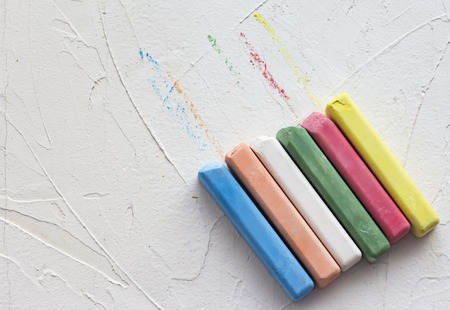Introduction to Eco-Friendly Paints and Finishes
As environmental awareness continues to shape consumer choices across the United Kingdom, eco-friendly paints and finishes are becoming increasingly significant in the world of interior decoration. These sustainable alternatives are specifically formulated to reduce harmful emissions and environmental impact, making them particularly relevant for UK homeowners, designers, and developers who are keen to create healthy indoor spaces while supporting broader sustainability goals. The adoption of such products is not merely a trend but a reflection of shifting values, as more individuals and businesses recognise the health and ecological benefits that come with choosing non-toxic, low-VOC (volatile organic compound) formulations.
The demand for eco-friendly paints and finishes is being driven by several factors unique to the UK market. Notably, there is rising public concern about indoor air quality and its effects on well-being, as well as an increasing emphasis on responsible sourcing of raw materials. Furthermore, UK regulations and industry standards are encouraging innovation in sustainable products, pushing manufacturers to develop high-performing options that do not compromise on aesthetics or durability.
Overview of Sustainable Paints and Finishes
Sustainable paints and finishes can be broadly categorised based on their composition, environmental credentials, and performance characteristics. The table below provides an at-a-glance comparison of common types found in the UK market:
| Type | Main Characteristics | Environmental Benefits |
|---|---|---|
| Water-Based Paints | Low odour, quick drying | Reduced VOC emissions, easy clean-up with water |
| Natural Paints | Made from plant oils, resins, clay or chalk | Biodegradable ingredients, renewable resources |
| Low/Zero VOC Paints | Minimal chemical content | Improved indoor air quality, safer for occupants |
This growing variety ensures that both residential and commercial interiors in the UK can benefit from products aligned with contemporary environmental expectations while still achieving desired design outcomes.
Key Environmental and Health Benefits
Choosing eco-friendly paints and finishes for interior decoration in the UK offers a range of advantages, not only for individual health but also for the broader environment. One of the primary benefits is the significant reduction in volatile organic compounds (VOCs), which are commonly found in traditional paints. VOCs can contribute to poor indoor air quality and have been linked to various health issues such as headaches, respiratory irritation, and even long-term chronic conditions. By opting for environmentally conscious products, UK residents can enjoy cleaner, safer air inside their homes.
| Benefit | Conventional Paints | Eco-Friendly Paints |
|---|---|---|
| VOC Emissions | High | Low/None |
| Indoor Air Quality | Poorer due to chemical off-gassing | Improved with fewer toxins released |
| Environmental Impact | Greater pollution and waste | Sustainable production & disposal |
| Suitability for Sensitive Groups | Potential irritants present | Safer for children, elderly, and allergy sufferers |
The use of low-VOC or VOC-free paints directly contributes to healthier living spaces. This is particularly crucial in UK households where insulation standards are high and ventilation may be limited, making indoor air quality an essential consideration. Furthermore, many eco-friendly finishes are manufactured using renewable resources and sustainable practices, minimising their ecological footprint. This dual benefit—supporting resident wellbeing while reducing environmental harm—makes eco-friendly paints a prudent choice for modern British homes seeking both style and sustainability.
![]()
3. Types of Eco-Friendly Paints and Finishes
When considering sustainable choices for interior decoration in the UK, a wide array of eco-friendly paints and finishes are readily accessible. These products are formulated to minimise environmental impact while maintaining high standards of performance and aesthetics. The following categories provide an overview of the principal types available on the market:
Natural Paints
Natural paints are manufactured from renewable resources such as plant oils, resins, clay, chalk, and natural pigments. Free from synthetic chemicals and volatile organic compounds (VOCs), they are particularly favoured for their minimal impact on indoor air quality and allergy-friendly attributes. Popular brands in the UK often use linseed oil or casein as a binder, providing a breathable finish suitable for period properties or those aiming for a traditional aesthetic.
Water-Based Paints
Water-based paints have become the standard choice for many UK households due to their low VOC content and ease of application. Unlike solvent-based alternatives, these paints emit fewer odours, dry quickly, and clean up with water rather than harsh chemicals. Many reputable manufacturers now offer extensive ranges of water-based emulsions and glosses specifically formulated to comply with British environmental standards.
Recycled Paints
Recycled paint is made by collecting unused or surplus paint, processing it, and repackaging it for resale. This innovative approach diverts waste from landfill while providing an economical solution for environmentally conscious consumers. Several UK initiatives collaborate with local councils to collect leftover paint, which is then filtered and blended into new shades suitable for domestic use.
Other Sustainable Finishes
Sustainable finishes extend beyond paint to include options such as natural waxes, oils, and varnishes derived from renewable materials. These products enhance wood surfaces while offering durability without relying on petrochemicals. Lime washes and clay plasters are also gaining popularity in heritage renovations across the UK due to their breathability and compatibility with older buildings.
Comparison Table: Eco-Friendly Interior Paint Options in the UK
| Type | Main Ingredients | Key Benefits | Common Uses |
|---|---|---|---|
| Natural Paints | Plant oils, resins, clay, chalk | Low VOCs, biodegradable, breathable | Walls, ceilings, historic properties |
| Water-Based Paints | Acrylic/latex binders, water | Quick drying, low odour, easy clean-up | Walls, woodwork, general interiors |
| Recycled Paints | Processed surplus paint | Circular economy, cost-effective | Community projects, budget renovations |
| Sustainable Finishes | Natural oils/waxes/lime/clay | No petrochemicals, enhances natural beauty | Woodwork, furniture, feature walls |
The UK Perspective on Eco-Friendly Products
The availability and diversity of eco-friendly paints and finishes across the UK reflect both regulatory encouragement and growing consumer demand for sustainable living solutions. By understanding the various types on offer, homeowners can make informed decisions that align with both their design preferences and environmental responsibilities.
4. Regulatory Standards and Certifications in the UK
When selecting eco-friendly paints and finishes for interior decoration in the UK, it is crucial to consider regulatory standards and certification schemes that ensure product safety, sustainability, and environmental performance. British and European regulations have established rigorous benchmarks to guide manufacturers and consumers towards healthier choices for both indoor environments and the planet. Key certification schemes include BS EN 71-3, EU Ecolabel, and BREEAM, each addressing specific aspects of eco-friendliness in decorative products.
BS EN 71-3: Safety of Toys – Migration of Certain Elements
This British Standard is particularly relevant for paints used on surfaces accessible to children, such as nurseries or schools. BS EN 71-3 limits the migration of toxic elements like lead, cadmium, and mercury from painted surfaces, ensuring that decorative coatings are safe for vulnerable users. Paints certified under this standard provide added assurance regarding chemical safety in family homes or public buildings where children are present.
EU Ecolabel: Environmental Excellence Across Europe
The EU Ecolabel is a voluntary scheme awarded to products meeting high environmental standards throughout their lifecycle—from raw material extraction through production to disposal. For paints and varnishes, the EU Ecolabel requires reduced levels of volatile organic compounds (VOCs), restrictions on hazardous substances, and robust performance criteria. This label assures UK consumers that the paint not only performs well but also has minimal impact on indoor air quality and the wider environment.
BREEAM: Building Research Establishment Environmental Assessment Method
BREEAM is widely recognised in the UK as a leading sustainability assessment method for buildings. It rewards projects that specify low-emission paints and finishes contributing to improved indoor air quality and resource efficiency. Selecting BREEAM-compliant products can help property developers achieve higher ratings for their residential or commercial developments.
Comparison Table: Key Certification Schemes
| Certification Scheme | Scope | Main Criteria | UK Relevance |
|---|---|---|---|
| BS EN 71-3 | Toy safety & paints accessible to children | Limits on toxic element migration | High (especially for schools, nurseries, homes) |
| EU Ecolabel | Paints & varnishes | Low VOCs, limited hazardous substances, lifecycle approach | High (widely used across Europe & UK) |
| BREEAM | Building materials & indoor environment | Sustainability criteria; low-emission products; resource efficiency | Very High (common in new builds & refurbishments) |
Legal Implications and Best Practices for Compliance
From a legal perspective, specifying certified eco-friendly paints helps stakeholders comply with UK building regulations concerning health and environmental protection. Contractors and property owners should verify documentation for each product’s compliance status before purchase or installation. Engaging with suppliers who understand these certifications can further mitigate regulatory risks while supporting sustainable construction objectives.
5. Practical Considerations for Homeowners and Designers
When selecting eco-friendly paints and finishes for interior decoration projects in the UK, both homeowners and designers must address several practical factors to ensure compliance with sustainability goals and British standards. Below is a detailed overview to assist decision-making, from product selection to application.
Guidance on Selecting Products
It is vital to prioritise products that are clearly labelled as low-VOC or zero-VOC, and ideally those certified by recognised UK or EU ecolabels. Look for brands that offer transparency regarding their ingredient sourcing and manufacturing processes. Choosing water-based over solvent-based paints further supports environmental objectives.
Table 1: Key Eco-Friendly Paint Certifications in the UK
| Certification | Issuing Body | What It Means |
|---|---|---|
| EU Ecolabel | European Commission | Meets stringent environmental criteria throughout lifecycle |
| BREEAM Approved | BRE Group (UK) | Assesses environmental impact of building materials |
| BS EN 71-3 Compliance | British Standards Institution | Chemical safety standard, especially important for nurseries and schools |
Verifying Credentials and Avoiding Greenwashing
Always request documentation or certification from suppliers to substantiate eco-friendly claims. Be wary of vague terminology such as “natural” or “eco,” unless supported by third-party verification. In the UK, Trading Standards can be consulted in cases of suspected misleading claims.
Cost Implications in the UK Context
Eco-friendly paints often carry a modest premium compared to conventional options, primarily due to higher quality ingredients and smaller production scales. However, long-term benefits—such as improved indoor air quality and reduced maintenance—often offset initial costs. The table below provides an indicative comparison:
Table 2: Typical Cost Comparison (2024 Estimates)
| Paint Type | Average Cost per Litre (£) | Lifespan (Years) | Main Benefit |
|---|---|---|---|
| Standard Emulsion | £8–£15 | 5–7 | Low upfront cost |
| Eco-Friendly Paint (Low VOC) | £15–£28 | 7–10+ | Sustainability & health benefits |
| Limewash/Clay Paints | £20–£35 | 10+ | Naturally antibacterial & breathable finish |
Application Tips Specific to UK Conditions
The UK’s climate necessitates careful timing for paint application; always ensure adequate ventilation and avoid painting during damp spells. Follow manufacturer instructions for surface preparation—particularly important for older British homes where lime plaster or historic finishes may be present. For optimal results, use high-quality brushes or rollers designed for water-based paints, and consider employing professional decorators familiar with eco-friendly products.
Summary Checklist for Sustainable Interior Painting Projects in the UK:
- Select products with credible eco-certifications.
- Verify all claims through documentation.
- Budget for slightly higher upfront costs but factor in longevity.
- Schedule works around the unpredictable British weather.
- If unsure, consult with local professionals experienced in sustainable design.
This practical approach ensures that environmental considerations are integrated into every stage of interior decoration while supporting both regulatory compliance and occupant wellbeing.
6. Leading UK Brands and Suppliers
The growing demand for sustainable interior decoration solutions in the UK has spurred a diverse range of reputable suppliers, manufacturers, and retail channels specialising in eco-friendly paints and finishes. These British brands are committed to environmental responsibility, product safety, and exceptional quality, ensuring that both trade professionals and homeowners can access green alternatives without compromising on performance or aesthetics.
Key British Eco-Friendly Paint Brands
| Brand | Core Features | Distribution Channels |
|---|---|---|
| Earthborn Paints | Breatheasy formulation, clay-based, VOC-free, wide colour palette | Specialist retailers, online direct orders |
| Lakeland Paints | Zero VOCs, odourless, child- and pet-safe, certified eco labels | National stockists, e-commerce platforms |
| Lick | Sustainable packaging, low-VOC, curated designer colours | Online store, partnership showrooms |
| Little Greene | Natural pigments, recycled packaging, accredited sustainability practices | Independent shops, national DIY chains |
Main Suppliers & Retail Channels
- B&Q and Wickes: Major DIY retailers with dedicated eco-friendly paint ranges.
- Brewers Decorator Centres: Extensive network providing professional-grade sustainable products.
- Eco Home Centre: Specialist supplier focusing solely on ecological building materials.
Regulatory Compliance & Certifications
Selecting a reputable supplier is critical for compliance with UK regulations such as BS EN 71-3 (toy safety standards) and adherence to EU REACH guidelines for chemicals. Most leading brands provide transparency through independent certifications such as EU Ecolabel or Allergy UK endorsements—ensuring peace of mind for consumers prioritising health and environmental impact.
Conclusion: Choosing the Right Partner
The UK market offers an impressive selection of eco-conscious decorative products via established brands and retail networks. When sourcing paints and finishes for interior projects, it is advisable to evaluate suppliers based on their environmental credentials, product testing standards, and accessibility. By engaging with these trusted British providers, clients can confidently achieve interiors that reflect both style preferences and a commitment to sustainability.
7. Sustainable Interior Design Trends in the UK
Sustainable interior design continues to gain traction across British homes, with an increasing number of homeowners and designers opting for eco-friendly paints and finishes. This shift is not only a testament to environmental awareness but also a reflection of the evolving aesthetic preferences within the UK. Below, we offer an overview of popular colour palettes, finishes, and innovative uses of environmentally responsible products that are shaping the landscape of British interior decoration.
Popular Eco-Friendly Colour Palettes
British interiors are renowned for their classic yet contemporary style, and this is reflected in the trending eco-friendly colour palettes. Earthy tones such as sage green, warm taupe, soft terracotta, and muted blues dominate sustainable interiors. These hues not only evoke a sense of calm but also harmonise seamlessly with natural light commonly found in UK homes.
| Colour Palette | Description | Common Application |
|---|---|---|
| Earthy Greens & Browns | Inspired by the British countryside, these colours bring nature indoors. | Living rooms, bedrooms |
| Soft Neutrals | Creams, beiges, and light greys provide a timeless foundation. | Kitchens, hallways |
| Pale Blues & Muted Pastels | Create a serene atmosphere and complement sustainable materials. | Bathrooms, nurseries |
| Terracotta & Warm Ochre | Add warmth and depth without overwhelming the space. | Diners, feature walls |
Innovative Uses of Eco-Friendly Finishes
The adoption of low-VOC or VOC-free paints has become standard practice for those seeking sustainable solutions. Water-based finishes and natural oil treatments are increasingly favoured over traditional chemical-laden options. Additionally, upcycling furniture with non-toxic stains or chalk paints allows for both creative expression and environmental responsibility.
Notable Trends in British Homes:
- Limewash Walls: Offering a textured finish that is both breathable and biodegradable—ideal for historic properties or modern rustic aesthetics.
- Recycled Materials: The use of recycled glass tiles or reclaimed wood not only reduces waste but also adds unique character to interiors.
- Bespoke Murals: Hand-painted murals using eco-friendly paints have become statement features in living spaces and children’s rooms alike.
- Naturally Derived Waxes: These provide durable protection for wooden surfaces while highlighting natural grain patterns.
Sustainable Product Highlights:
- Bamboo Flooring: Rapidly renewable, stylish, and increasingly available from UK suppliers committed to ethical sourcing.
- Cork Wallcoverings: Hypoallergenic, biodegradable, and highly insulating—perfect for modern eco-conscious households.
- Natural Clay Plasters: Regulate indoor humidity while offering a range of subtle textures and earth-inspired colours.
The demand for sustainable interior solutions is expected to continue its upward trend as British consumers prioritise both health and environmental impact. By integrating eco-friendly paints and finishes into their homes, residents across the UK are setting new standards in responsible design without compromising on style or comfort.


